Savor Japan
August 31, 2017
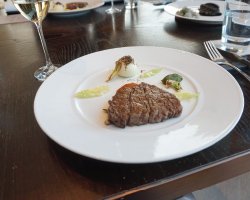
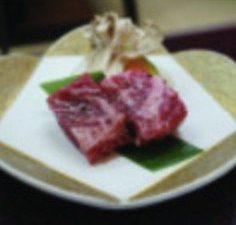
In an effort to appeal to the palates of foodies and food travelers around the world, Japan’s Ministry of Agriculture, Forestry and Fisheries has launched an initiative called Savor Japan. To encourage tourism and to promote areas not normally on the tourism route, the government has begun to provide an official certification process for these regional areas, similar to the AOC process for wine, cheese and agricultural products in France. The hope is by certifying the areas and then promoting their unique assets and food products, travelers will venture beyond Tokyo to visit them and get to know a more authentic Japan.
Over fifty cities and regions applied for the honor but only five were chosen for the initial certification. Those first five certified areas are: the Tokachi region on Hokkaido, Ichinoseki and Hiraizumi in Iwate prefecture, Tsuruoka in Yamagata prefecture, the Maze region in Gifu prefecture and the Nishi-Awa region in Tokushima prefecture.
I had the opportunity to join a group of other travel and food writers as we explored three of those five regions. Welcomed and hosted by the local government officials in each area we visited, it was a perfect introduction to Japan for me, as I had never visited before.
FIRST STOP
Ichinoseki and Hiraizumi
After a three-hour ride on the bullet train from Tokyo Station, we arrived in the city of Ichinoseki. The mayor himself headed the welcoming committee at the train station and then we headed to the Genbikei Roadside Station for our first taste of rural Japanese culture.
That first taste happened to be the annual “child-walking” ceremony. Part of the yearly harvest celebration, toddlers are dressed in traditional outfits and loaded with mini sacks of rice on their backs. The toddlers, who can barely walk without help, are guided (mostly pushed) along a short track, while family members cheer from the sides.
After the kid races, we visited the Honederamura Shoen Iseki estate site. This preserved rural estate shows the landscape of feudal Japan as it existed 800 years ago and serves as a cultural and educational center for the region. Ichinoseki is all about mochi (pounded rice cakes) and we had a chance to do some “mochitsuki” or rice cake pounding in the traditional manner, with a huge mallet and barrel.
The rice flour is placed into the barrel and one person hits it with a huge mallet while another (brave) person sprinkles water on the doughy blob between impacts. We then gathered for a formal mochi lunch, consisting of almost 20 different preparations and flavors (ranging from sweet to savory) of the rice cakes, served in bite size portions. Dessert was a treat as we stopped at a local ice cream shop, Polano Gelato, for some freshly made ice cream – freshly made as in the milk is obtained several times a day from the cows in the pasture behind the shop.
After our adventures, we arrived at our hotel for the night, a very cool, local inn called the Kajiya Annex Ramakko Wildcat. This provided my first experience sleeping in Japanese bedding, with a series of mats and cushions placed on the floor. Although tiny, the room had its own mini hot tub, a small, square bathtub that was very deep.
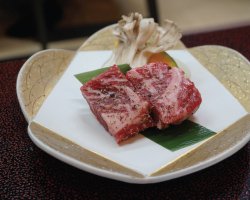
We had dinner in the hotel’s dining room/restaurant and it included the local brand of Wagyu, Iwate Minamigyu Beef. Large, tender, buttery-smooth chunks of meat, which we cooked with some leaves in a cast iron bowl which was held over an open flame. One of the guests at the dinner was the owner of a local brewery and we had a chance to do a beer tasting with four different types of his locally brewed lagers and ales.
NEXT STOP
Mountains and Monks in Tsuruoka
Traveling by bus, we made our way from Ichinoseki in Iwate prefecture up into the mountains of Yamagata prefecture to Mount Haguro, one of the three sacred mountains of Dewa. It was there we would learn the ways of the yamabushi or mountain priest.
The area is considered sacred to the Japanese people. Visitors can stay in a traditional Shinto temple and sample vegetarian temple food, which we did. After being fitted with proper mountain priest headgear (an elaborately tied white headscarf) we headed for a hike through the forest to a shrine called the Five-story Pagoda, a Japanese national treasure. With the cool mountain air, chanting yamabushi priest, huge trees around us and snow on the ground, it was an invigorating experience.
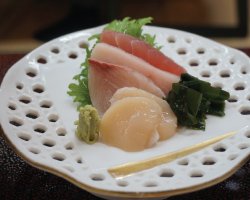
After all the hiking, we gathered in the communal dining room of the Dewa Sanzan temple for an elaborate vegetarian meal known as shojin ryori. Following a very serious introduction to each dish by the very serious chef, I was happy to see some of the priests join us for dinner. I was also happy to see the copious amounts of sake and beer we began to pour for each other and how the priests were drinking us all under the table to the shouts of “ukettamo!”
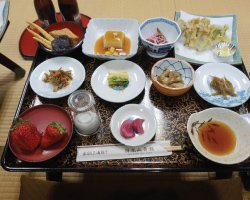 The ancient vegetarian meal, as traditionally eaten by the priests and monks, has no meat nor fish. It’s made up of fresh mountain vegetables, rice and mushrooms, served raw and cooked in various ways. Since it was the wintertime, many of the vegetables were pickled or otherwise preserved. There were probably 30 different servings of various things over the course of the meal.
The ancient vegetarian meal, as traditionally eaten by the priests and monks, has no meat nor fish. It’s made up of fresh mountain vegetables, rice and mushrooms, served raw and cooked in various ways. Since it was the wintertime, many of the vegetables were pickled or otherwise preserved. There were probably 30 different servings of various things over the course of the meal.
The local sake came from the seven sake breweries in Tsuruoka, which use the rice grown on the Shonai Plain and the local pure mountain spring water to make the rice wine. With its unique spiritual culture and temple-based vegetarian cuisine, the area is now part of the UNESCO Creative Cities Network for gastronomy. There are only 18 cities in the world in the network and Tsuruoka is the only one in Japan.
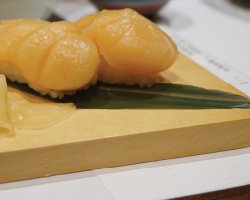
LAST STOP
Wine and Cheese on Hokkaido
Our last few days on the Savor Japan food tour would be spent on the island of Hokkaido. After flying back to Tokyo from Shonai, we hopped a flight to Obihiro to visit the Tokachi region of the island prefecture of Hokkaido.
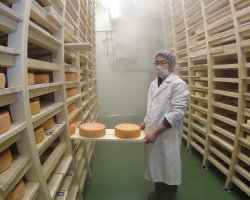
In the winter, the mountainous area is a ski resort, popular due to its unique powder-like snow. We stayed at a spa hotel called the Tokachigawa Onsen Daichi, which features hot springs and onsen, or Japanese mineral baths. The highlight was the mini onsen we each had on our balcony. The small, natural hot spring bathtub was great to use with the falling snow coming down around us.
Dinner in Tokachi was an awesome feast, featuring an amazing range of beef, pork and seafood, all fresh and local. Hokkaido is known for its seafood, especially outside of Japan, but I was amazed at the quality of the meat and dairy products and the care and attention to detail that goes into their production.
The next day started with a visit to a cheese factory. Tokachi is known for its dairy products and the high fat raw milk makes excellent cheese. The cattle eat the area’s unique vegetation, further influencing the flavor of the milk and products made from it. We sampled a delicious Tokachi raclette moor wash cheese that’s washed in crystal clear, hot spring water. It also uses a fermentation extract produced from local vegetation to give it a very distinctive flavor.
It was finally time to taste some Japanese wine. The Ikeda Wine Castle is the main large municipal vineyard, winery, wine cellar and wine store in Obihiro. It was granted the country’s first license to make wine and Hokkaido is still the only place in Japan where wine is made.
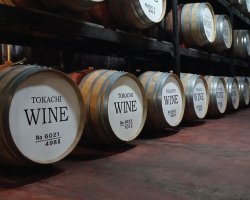
Producing wine since 1975, they have a range of reds, whites, rosés along with sparkling wines and brandies. After almost 50 years the vines and the wine production are just now starting to make an international impact. The area does grow great grapes due to the huge temperature differences between the day and night and the winter and the summer.
After the wine and cheese we visited the Obihiro Racecourse to learn about banei horseracing. A modern interpretation of farmers seeing whose drafthorse can pull more, the horses, pulling several tons of weight on sleds, race on a 660-foot-long course with two hills in the middle. Like the child-walking races we attended on the first day of our adventure, it was another fascinating look at rural Japanese culture.
Finally, Tokyo Fine Dining
After my wonderful adventures in Iwate, Yamagata and Hokkaido, I spent another few days exploring Tokyo and its fine dining food scene. I had an excellent Italian dinner at Piacere, the restaurant inside the Shangri-La Hotel, Tokyo, where I stayed.
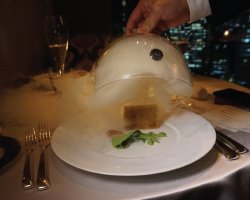
Smoked foie gras at Piacere, the Italian restaurant at the Shangri-La Hotel, Tokyo
Executive Chef Andrea Ferrero strives to offer an authentic casual Italian fine dining experience. They take the farm-to-table concept seriously as the hotel has a food and beverage project called “Going to the Source” where they send Chef Ferrero around Japan to meet with his suppliers. It allows him to connect directly with farmers and providers, some of whom will only sell to people they know.
Another foodie highlight in Tokyo was a fantastic lunch at MOTIF, the French restaurant at the Four Seasons Tokyo, Marunouchi. MOTIF provides an authentic contemporary French menu, in the tradition of “Esprit Terroir,” or Spirit of Earth. I thought having a Japanese Head Chef, Hiroyuki Asano, running a French restaurant worked perfectly, especially his attention to detail. Culinary Advisor Chef Hiroshi Nakamichi is considered one of the great modern Japanese chefs and his French restaurant Moliere in Sapporo holds three coveted Michelin stars.
The menu at MOTIF featured some classic French dishes, but the stand-out was a steak from Shodo Island. The island, located in the inland Sea of Japan, is covered with olive trees and the beef cattle on the island mainly eat olives. It makes the beef so tender and flavorful, I’ve never eaten anything like it.
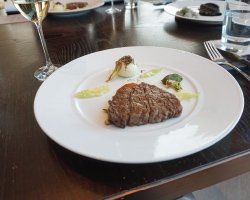 Beef from Shodo Island
Beef from Shodo Island
Japan is a vibrant and exciting country. Visitors owe it to themselves to take some time to get out of Tokyo to explore some of the areas now certified as Savor Japan.
Visit the Savor Japan website at en.savorjp.com




